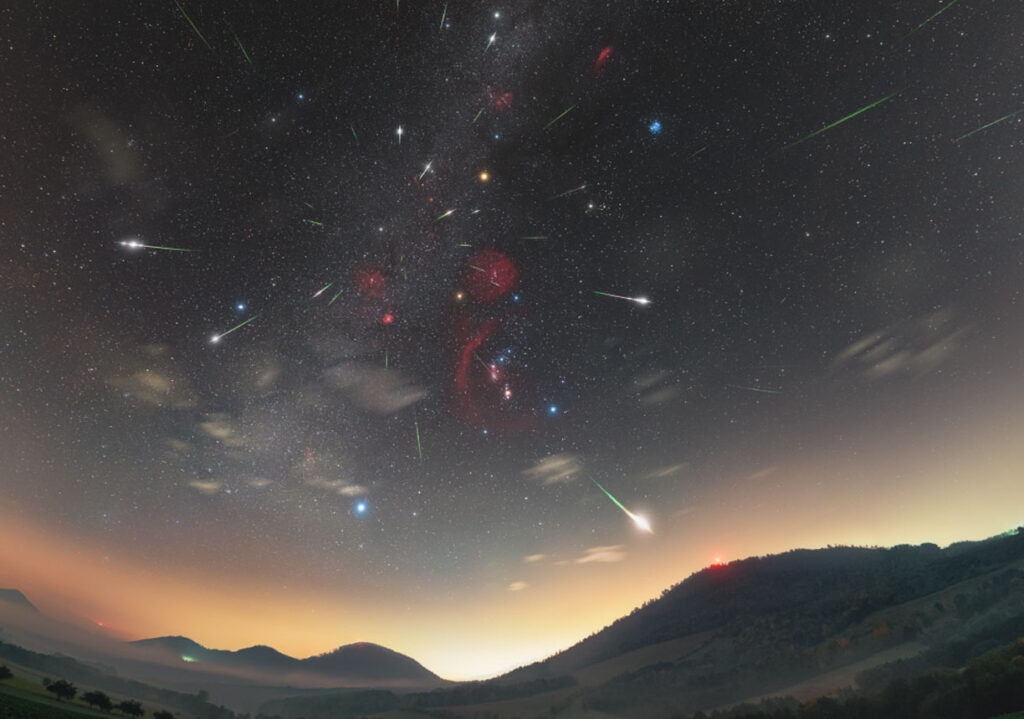This October promises plenty of fascinating and spectacular events, starting off with an annular solar eclipse, which could be observed in South America. The Orionid meteor shower will continue throughout the month. Bright planets will also bring a lot of joy: as the Saturn visibility season continues, the conditions for Jupiter and Mars observations will also improve. In the second half of the month, we will be able to glimpse the beautiful Venus when it graces the southwest sky shortly after sunset.
But perhaps the most anticipated event of the month is the bright comet, which is predicted to make its closest pass of Earth on October 12.
Upcoming Events
👀 🔭 📷 October 2 – New Moon; Annular Solar Eclipse (the south of South America).
👀 🔭 📷 October 5 – A Moon-Venus Conjunction.
👀 🔭 📷 October 7 – In the southwest, the Moon will appear near the reddish star Antares (α Scorpii). Their shortest separation of 0.2° will occur at 15:34 EDT in the United States and in the evening at 21:34 CEST in Europe, after the pair has already dipped behind the horizon.
👀 🔭 📷October 12 – Comet C/2023 A3 (Tsuchinshan-ATLAS) will make its closest approach to Earth.
👀 🔭 📷 October 14 – A Moon-Saturn Conjunction.
👀 🔭 📷October 15 – The Moon (96% illumination) will be in conjunction with Neptune (7.7m). Their shortest separation of 0.4° will be at 08:06 EDT and 19:06 CEST.
👀 🔭 📷October 17 – The third and largest Supermoon in the current season. Will occur at exactly 07:26 EDT and 13:26 CEST. In Europe, including Ukraine, the Moon won’t be visible yet.
👀 🔭 📷 October 19 – The Moon will pass the Pleiades stellar cluster.
👀 🔭 📷 October 21 – The peak of the Orionid meteor shower.
👀 🔭 📷 October 23 – The Moon (56% illumination) will be in conjunction with Mars (+0.2m) at exactly 15:55 EDT and 21:55 CEST. In Europe, their shortest separation of 3.2° will occur shortly after the pair appears in the evening sky.
Most Noteworthy Events: A Detailed Overview
October 2: The New Moon and Annular Solar Eclipse.
Solar eclipse occurs when the Moon passes exactly between us and the Sun. Due to slight elongation of the Moon’s orbit, its apparent dimensions slightly change. On October 2, the Moon will reach its orbital apogee — the farthest point from Earth. As a result, the Moon’s angle size will be smaller compared to our star, so it won’t be able to completely obscure the Sun from our point of view. Even at the peak of the eclipse, the Sun will still be able to peek from behind the Moon, creating the so-called “ring of fire”. The eclipse will be visible primarily from the Pacific. As for land observations, the peak of eclipse will only be observable in the south of South America.
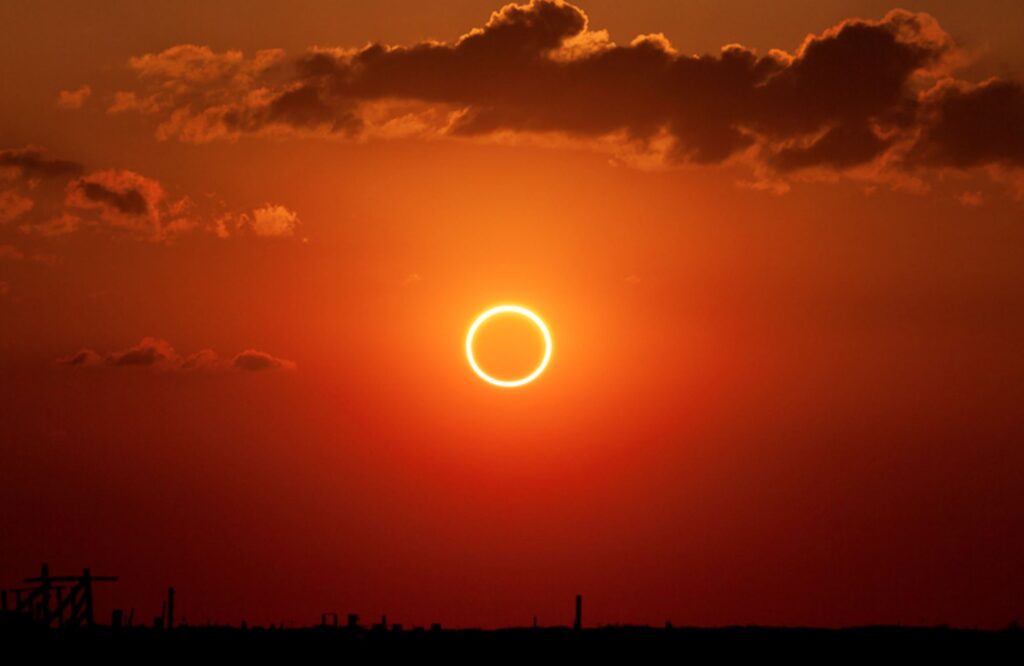
Although observers in other areas won’t be able to witness this eclipse, the new moon will provide us with a great opportunity to see the usually faint deep-sky objects. If you’re novacy to observations of galaxies, nebulae and stellar clusters, this month is the perfect time to start exploring them. We recommend the Andromeda Galaxy (M31), the Double Cluster of NGC 869 and NGC 884 in Perseus constellation, the planetary Ring Nebula (M57) in Lyra constellation, and The Triangulum Galaxy (M33).
While all of these can be easily observed with a small telescope or binoculars, both the Andromeda and the Double Cluster can be seen with the naked eye — provided the light pollution is relatively low, of course. The NGC 869 and NGC 884 clusters could be particularly delightful to watch with binoculars or a small telescope. We recommend using digital planetariums to find your way around the starry sky.
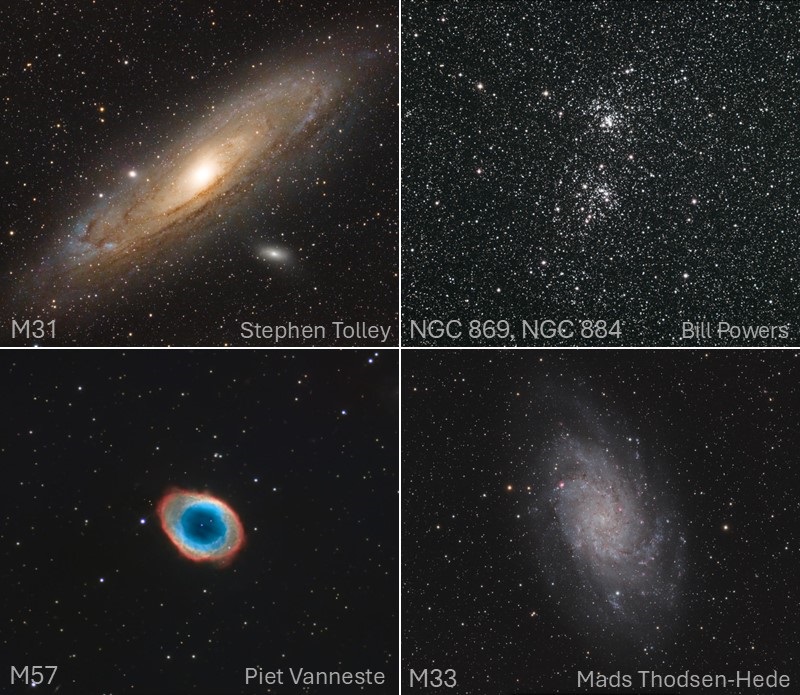
October 5: A Moon-Venus Conjunction.
👀 📷 – great for both visual observations and photography.
In Europe, the New Moon’s crescent (at 8% illumination) will appear low on the southwestern horizon at a separation of 3° below Venus (-3.9m). The observation window will be pretty short, around 20 to 30 minutes following sunset. The bright pair will nevertheless be a joy to behold, whether it’s to simply watch their delightful dance or capture it in stunning images.
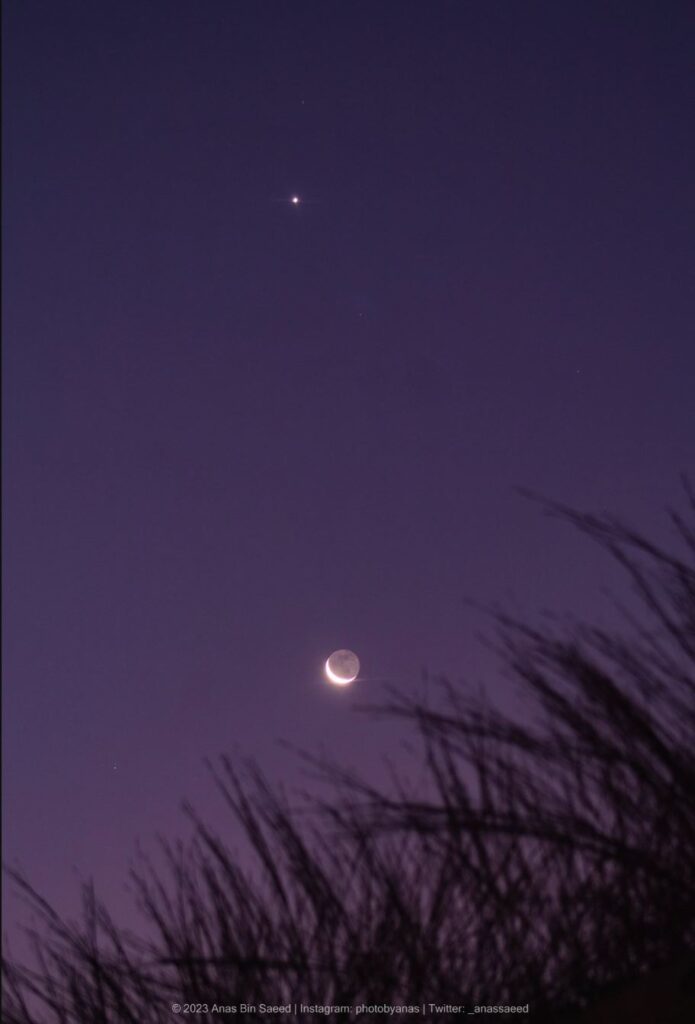
October 12: Comet C/2023 A3 (Tsuchinshan-ATLAS) will make its closest approach to Earth.
👀 🔭 📷 – great for observing with the naked eye, binoculars, telescopes, and for photography.
On September 27, the comet successfully passed its perihelion (its closest point to the Sun) and began its approach to Earth. On October 12, Tsuchinshan-ATLAS will pass us at its closest orbital distance of 71 million kilometers, or roughly 44 million miles, creating the best conditions for observation in the Northern Hemisphere. In the following two to three weeks, the comet will be observable low above the western horizon at 40 to 50 minutes after sunset. The best time to catch the comet is between October 12 and 15 when it becomes visible to the naked eye. After that, the comet will start fading, so any further observations will require binoculars or telescopes.
On October 12, as Tsuchinshan-ATLAS crosses the Earth’s orbital plane, it will likely acquire the so-called anti-tail — a thin spike opposite its main tail pointing towards the Sun.
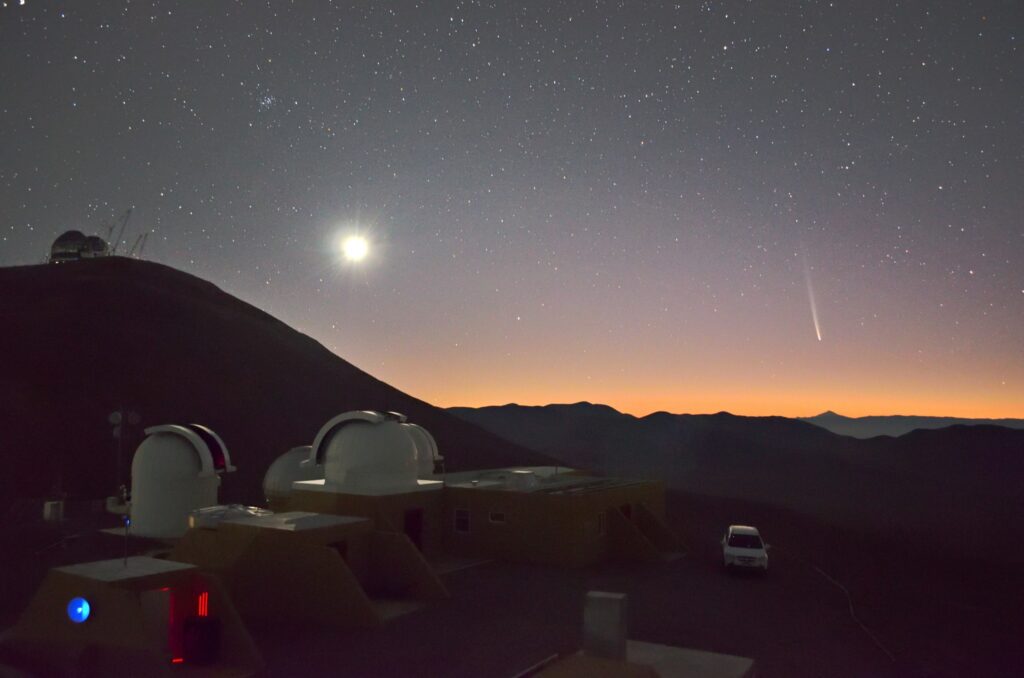
October 14: A Moon/Saturn conjunction.
👀 🔭 📷 – works for visual observations, either with the naked eye or equipment, as well as photography.
In Europe, on the night of October 14-15, the Moon (at 90% illumination) will accompany Saturn (0.7m) across the sky. When the pair meets at a separation of 0.75° at 20:48 CEST, we’ll be able to witness their union through binoculars or a small telescope. In the south of Africa and Eurasia, you might also catch an occultation itself as Saturn disappears behind the Moon.
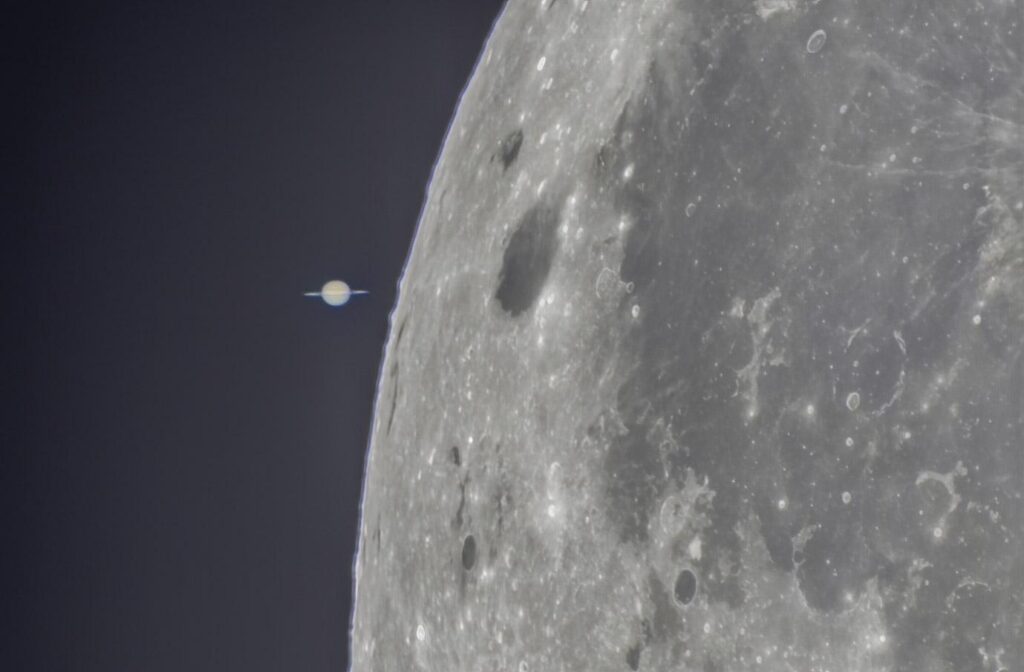
October 19: The Moon near the Pleiades star cluster.
🔭 📷 – works for observations with telescopes and binoculars, as well as photography.
On the night of October 19-20, the Moon will pass close by the Pleiades open cluster (M45) in the Taurus constellation. In Europe, with the smallest separation of 0.1° at 21:59 CEST. At 98% illumination, our satellite will be much brighter than the stellar cluster, so you’ll likely need a telescope or a pair of binoculars to witness this moment. The same goes for photography — at its full power, the Moon will outshine the more distant stars and make it harder to capture the event.
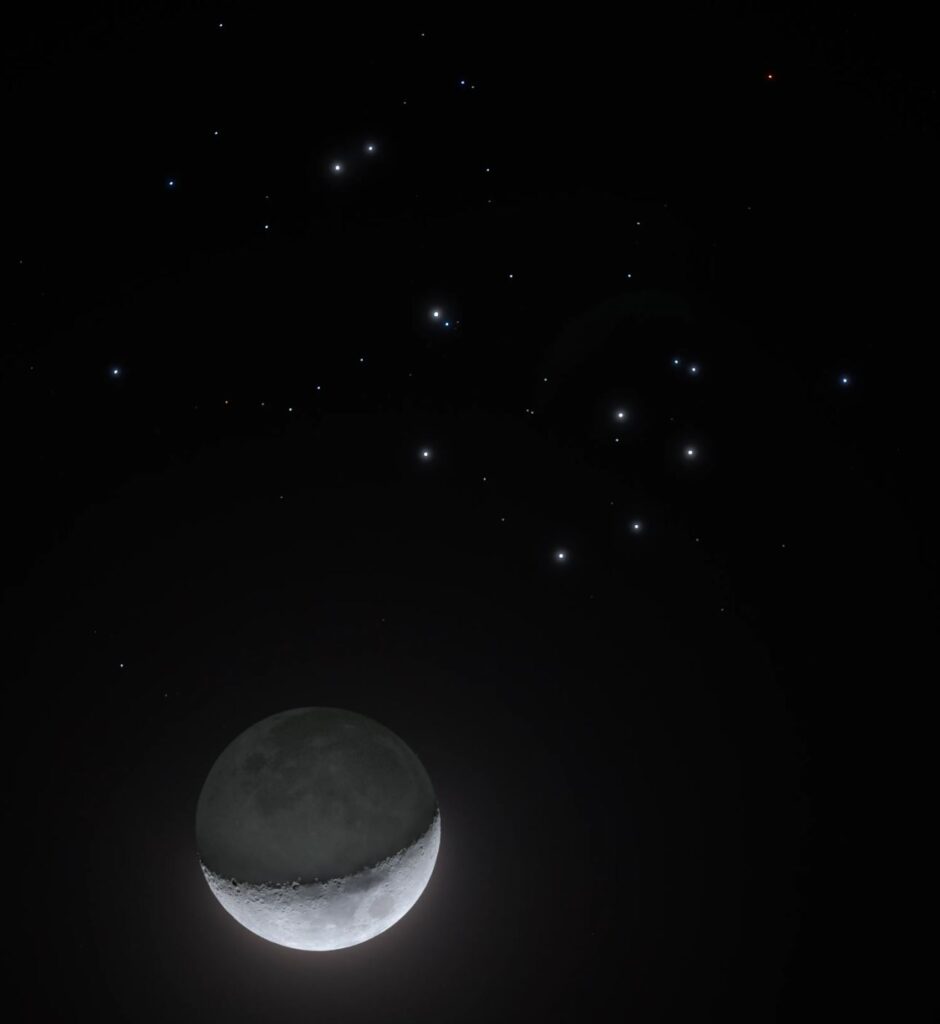
October 21: The peak of the Orionid meteor shower, ZHR = 20.
👀 – works for visual observations with the naked eye.
The Orionids are typically active from October 2 to November 7, reaching their peak on October 21, though it isn’t very pronounced. In other words, the difference in the shower’s activity before and after its peak simply isn’t that significant. With ZHR = 20, the Orionids are considered to be fairly bright, but this year’s observations will be hampered by the Moon’s waning phase at 80% illumination. The shower’s radiant will occur after 21:00 CEST, when the Moon is already up.
The Orionids are the off-spring of the famous Halley comet (1P/Halley), which is also responsible for the Eta Aquariids meteor shower in spring. What we see as the “shooting stars” are, in fact, tiny dust particles from the Orionid meteor stream colliding with the Earth’s atmosphere at 66 km/s (roughly 41 miles per second). These meteor flashes occur at high speeds, and their light is quite bright but, at the same time, very short-lived.
